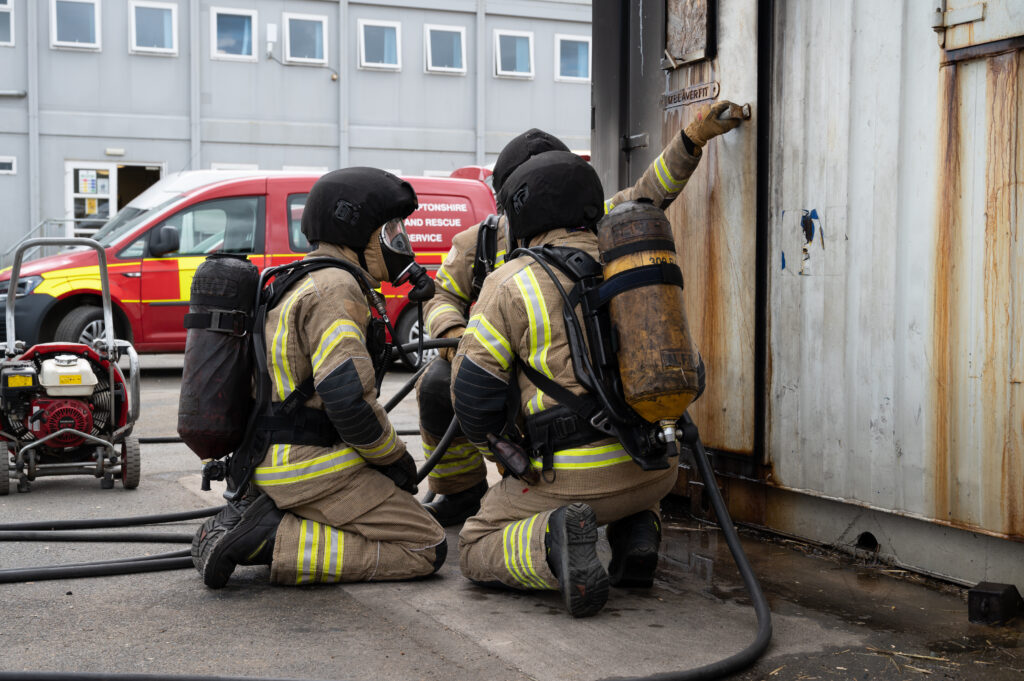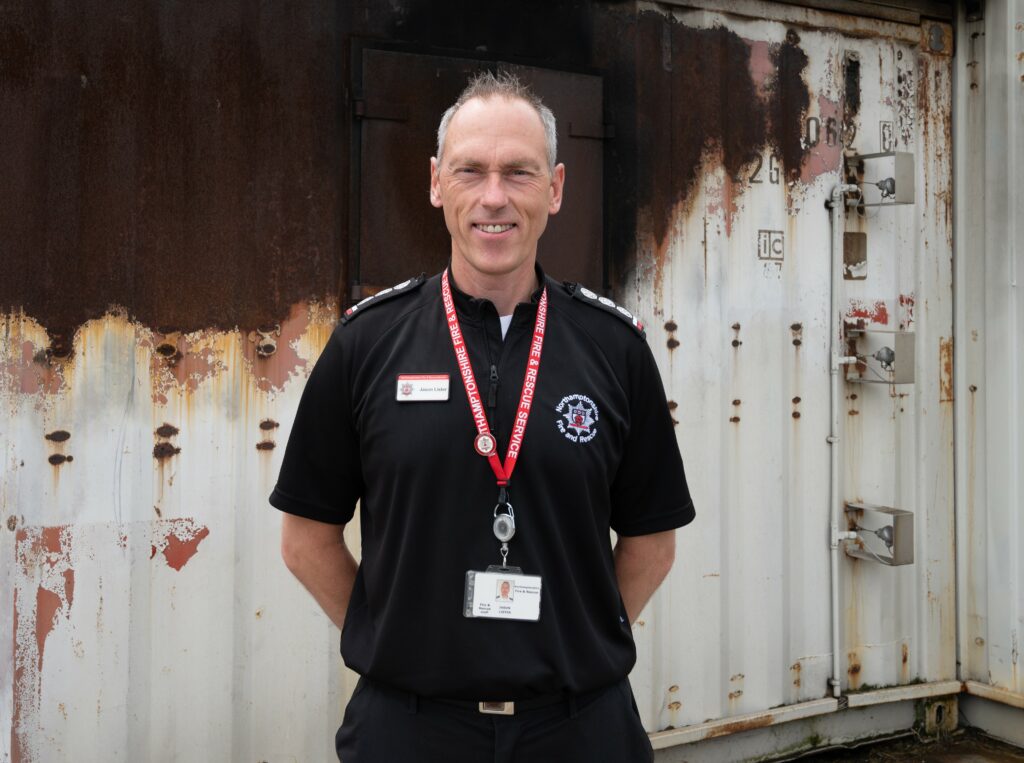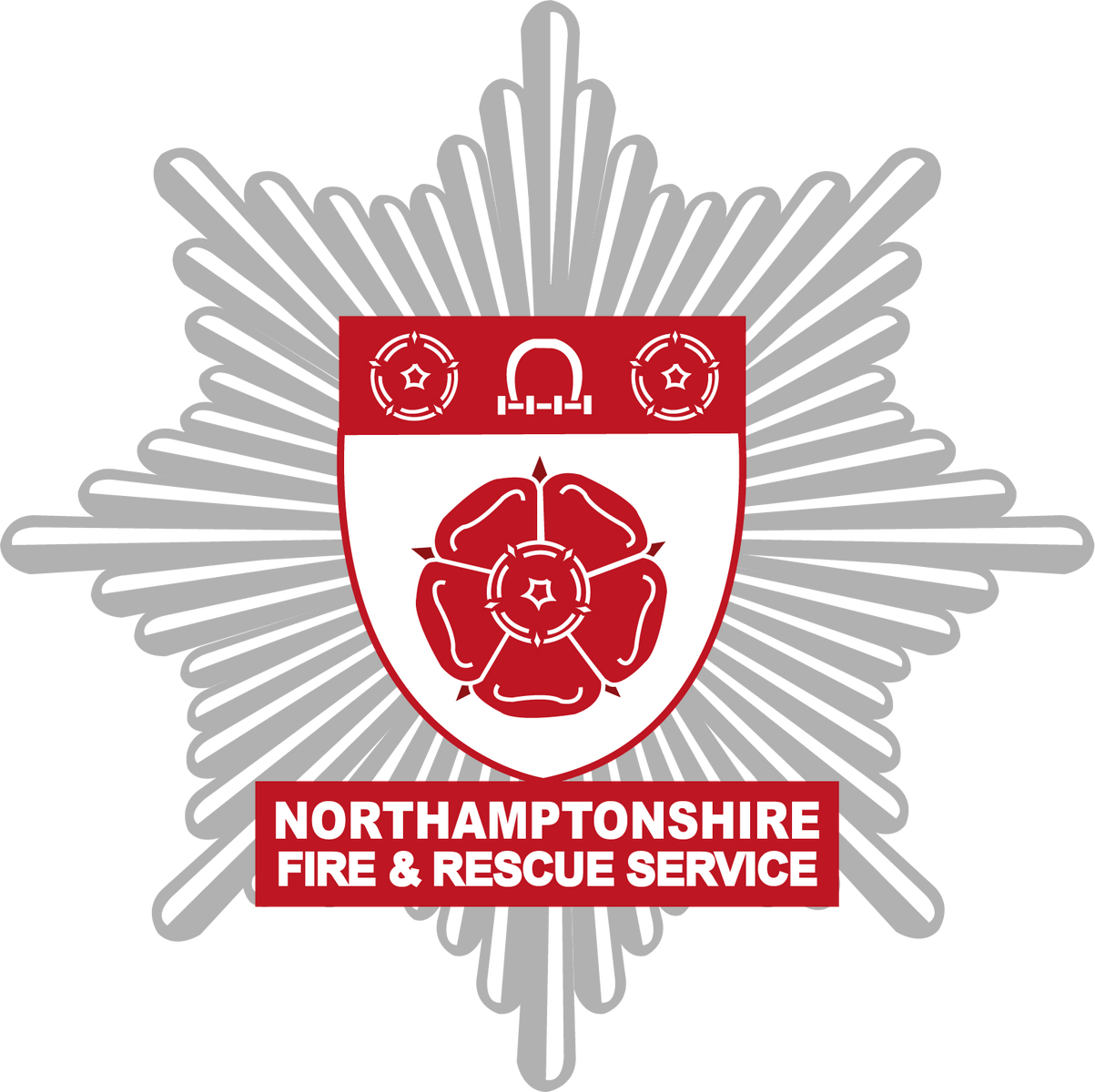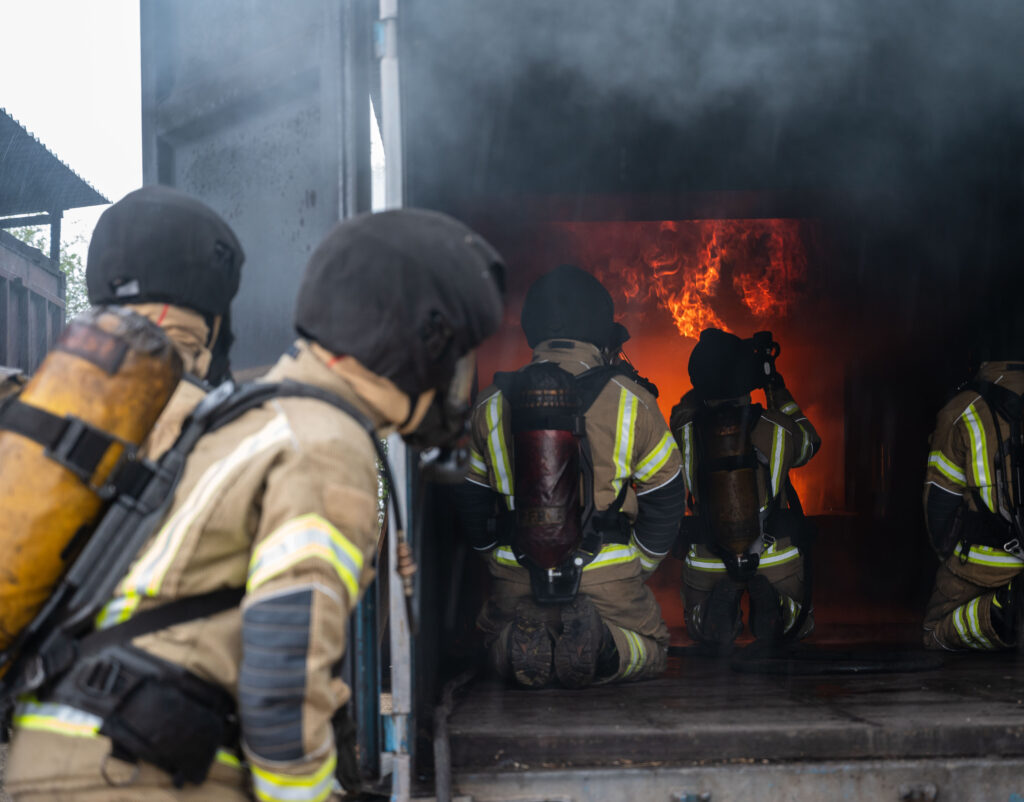At the end of a former runway and surrounded by wind turbines and grazing sheep lie the three buildings in Northamptonshire that catch fire the most.
It’s by design of course, as the site at Chelveston is where wholetime and on-call firefighters head to undergo training and assessments that will stand them in good stead for their next shout.

The blackened training rigs at the former RAF site have been set ablaze time and again since the early 2010s as firefighters both learn and revisit their skills in them.
“We started with two containers at the bottom of the site and a portaloo,” says Jason Lister, the Training Delivery Manager for the service who oversees the team of instructors.

“We’re proud of how the site has developed since then. A lot of people don’t necessarily see the work that we do here, but it’s predominantly to maintain firefighters’ competence.”
Inviting other services in to use the site is a key part of the commercial side of Chelveston, overseen by Dan Moore, that can sometimes be overlooked. Such are the quality of the facilities that are hidden away in this corner of rural Northamptonshire that other services will come here to offer training to their crews, with Cambridgeshire Fire & Rescue Service and London Fire Brigade becoming regular visitors.

For Northamptonshire staff, the training at Chelveston is purely tactical and will see wholetime and on-call firefighters visit twice a year to take part in training programmes ran by a team of eight instructors and supported by two training support technicians.
The practical courses include search and rescue, which simulates both commercial and domestic fires and forces them to navigate in dark conditions, extinguish fires, identify casualties and exit safely. Then there’s compartment fire behaviour training – the highest risk exercise that exposes them to very high temperatures so they can learn appropriate gas cooling techniques. And there’s also an exercise in tactical ventilation, working out how to effectively use fans to remove the hot fire gases and improve the environment to maintain firefighter safety.
New recruits will also undergo an intense three-week Breathing Apparatus (BA) course, which is run four times a year. This course is one of the hardest, both physically and mentally, to complete and takes them all the way through to being confident to wear BA, understand the risks with flashover and backdraughts, and how to work in difficult environments. It also shows them how quickly the flashover can happen in a real-life incident. The rigs at Chelveston act as their introduction to Northamptonshire before they head off to join their new stations and revisit every year to maintain their skills.
“People come from across the country to join Northamptonshire Fire & Rescue Service,” explains Watch Manager Instructor Chris Westfield. Chris is one of those himself, having transferred from London Fire Brigade in 2019, where he dealt with a host of large-scale incidents in the capital, including Grenfell Tower.

He adds: “We recently had some wholetime transferees and they did things such as RTC familiarisation and flashover training. Different services use different breathing apparatus, so they have gone through training with our BAs now and they have also done ultra-high-pressure training.
“We make sure that we treat on-call the same as wholetime when they visit us – they are firefighters and they should have the same training and safety.
“Ultimately for whoever comes in we try to create, as best as we can, work related scenarios. The facilities we have here at Chelveston are far greater and advanced than a lot of other services, even down to the training rigs here.
“You speak to a lot of people nationally and they either have rigs that are very limited, or no training at all and they go to other services to train. But here we have these fantastic multi-floor units whereby we can create several different scenarios to help people be as safe as they possibly can.”








 Fire Risk Assessment (worked example for House in Multiple Occupation (HMO)) (PDF 389KB)
Fire Risk Assessment (worked example for House in Multiple Occupation (HMO)) (PDF 389KB)
